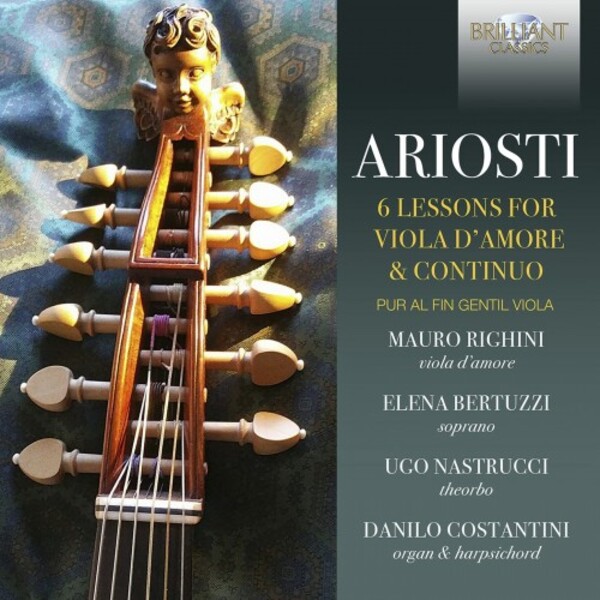
Ariosti - 6 Lessons for Viola d’Amore & Continuo, Cantata ‘Pur alfin’
£9.45
In stock - available for despatch within 1 working day
Despatch Information
This despatch estimate is based on information from both our own stock and the UK supplier's stock.
If ordering multiple items, we will aim to send everything together so the longest despatch estimate will apply to the complete order.
If you would rather receive certain items more quickly, please place them on a separate order.
If any unexpected delays occur, we will keep you informed of progress via email and not allow other items on the order to be held up.
If you would prefer to receive everything together regardless of any delay, please let us know via email.
Pre-orders will be despatched as close as possible to the release date.
Label: Brilliant Classics
Cat No: 95620
Format: CD
Number of Discs: 1
Release Date: 11th March 2022
Contents
Works
Cantata 'Pur al fin gentil Viola'Lezione no.1 in E flat major
Lezione no.2 in A major
Lezione no.3 in E minor
Lezione no.4 in F major
Lezione no.5 in E minor
Lezione no.6 in D major
Artists
Mauro Righini (viola d’amore)Elena Bertuzzi (soprano)
Ugo Nastrucci (theorbo)
Danilo Costantini (organ, harpsichord)
Works
Cantata 'Pur al fin gentil Viola'Lezione no.1 in E flat major
Lezione no.2 in A major
Lezione no.3 in E minor
Lezione no.4 in F major
Lezione no.5 in E minor
Lezione no.6 in D major
Artists
Mauro Righini (viola d’amore)Elena Bertuzzi (soprano)
Ugo Nastrucci (theorbo)
Danilo Costantini (organ, harpsichord)
About
His Six Lessons for Viola d’Amore, published in London in 1724 and dedicated to King George, were as the name implies composed expressly to teach violinists to play the viola d’amore. They are written in scordatura with a system of movable keys to indicate the different positions and fingerings of the left hand up to the fourth position.
Ariosti’s Cantata for solo voice with the viola d’amore Pur al fin gentil Viola was probably composed around 1690.
The viola d’amore has six or seven strings and (almost always) the same number of resonance strings placed under the bridge, which strongly characterise its timbre. Tunings were variable and, although from the second half of the 18th century the tuning in D became standard, it is not always straightforward to know which to use. For this reason, viola d’amore parts are written in scordatura, a sort of tablature in which the written note indicates the finger position according to standard tuning, but not the sounding pitch on a ‘detuned’ string. This fascinating and somewhat mysterious instrument is played by both violinists and violists; for violists in particular it offers access to a new, though unfortunately not very vast, repertoire, with works by Biber, Bach, Ariosti and Vivaldi, and more recently Hindemith, Martin, Ghedini and many others.
Error on this page? Let us know here
Need more information on this product? Click here